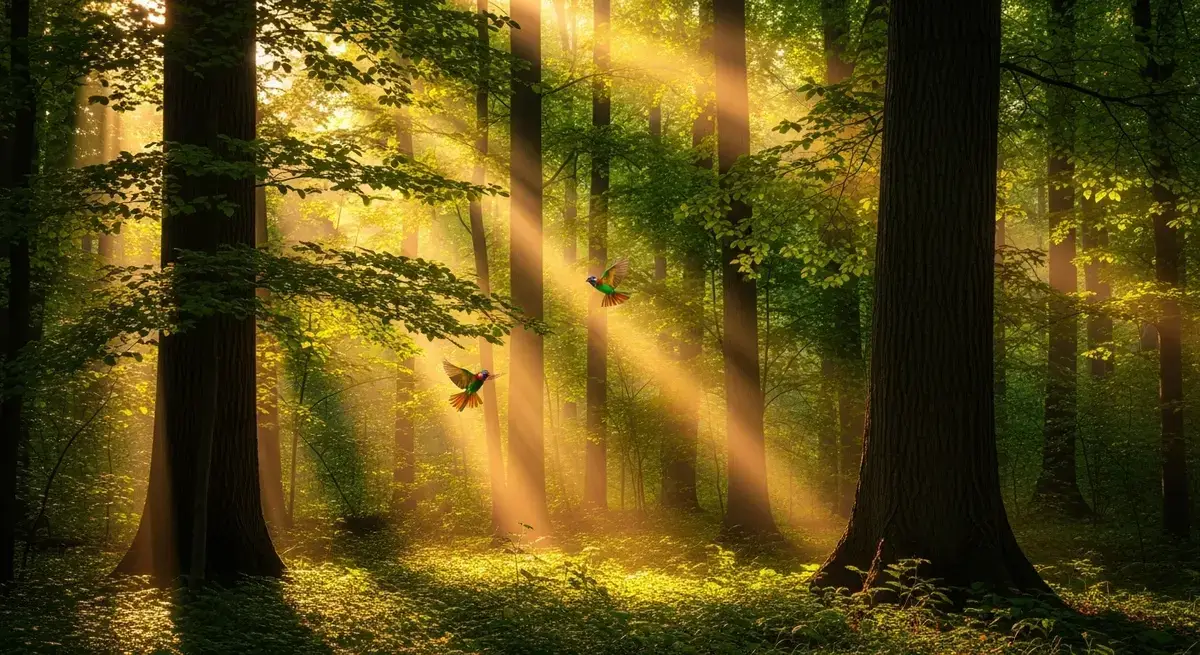Why Forests Are Essential Guardians of Our Climate and Life
Forests are far more than just clusters of trees—they are vibrant, living ecosystems that play a crucial role in regulating our climate and sustaining biodiversity. Their impact reaches every corner of the planet, providing vital services that keep our environment balanced and healthy. Understanding the remarkable ways forests support life, from absorbing carbon to nurturing wildlife, is key to inspiring action for their protection.
How Forests Help Fight Climate Change
Forests are often called the lungs of the Earth—and for good reason. They absorb an astonishing 2 billion tonnes of CO₂ every year, making them one of our strongest allies against climate change. A single large tree can pull up to 370 liters of water from the soil daily, fueling photosynthesis and growth. Together, trees and forest soils store around 3.4 trillion tonnes of carbon worldwide—about one-third of all greenhouse gas emissions produced annually. This incredible capacity to lock away carbon highlights why preserving forests is essential in the global effort to slow climate change.
Forests: The Water Cycle’s Unsung Heroes
Beyond carbon storage, forests are vital for maintaining Earth's water balance. They improve groundwater supplies and protect soil from erosion. Through a process called evapotranspiration, forests release moisture into the atmosphere, contributing to roughly 40% of annual rainfall globally. In tropical regions, air passing over forests generates twice as much rain compared to less vegetated areas, helping sustain regional climates and agriculture. Without forests, many areas would face drier, less stable weather patterns.
Biodiversity Hotspots and Life’s Cradle
Forests are home to a staggering 80% of terrestrial species, making them biodiversity hotspots that support an incredible variety of plants, animals, and microorganisms. They also sustain approximately 70 million Indigenous people worldwide, providing food, shelter, and cultural identity. However, the situation is alarming: forest wildlife populations have plummeted by 69% since 1970, a stark warning of ecosystem decline. Protecting forests means safeguarding the rich web of life that depends on them.
The Devastating Impact of Deforestation
How Forest Loss Accelerates Climate Change
Deforestation is one of the greatest threats to both climate stability and biodiversity. Driven largely by cattle farming, soya cultivation, and palm oil plantations, forests are disappearing at an alarming rate. In tropical regions alone, an estimated 100 species vanish every day due to habitat destruction. This loss not only endangers wildlife but also releases stored carbon back into the atmosphere, fueling a dangerous feedback loop that worsens global warming. Stopping deforestation is critical to breaking this cycle.
The Ripple Effects on Human Health
The health of forests is deeply connected to our own well-being. As forests shrink, the risk of zoonotic diseases—those that jump from animals to humans—increases dramatically. Forests also underpin sustainable food production and contribute to overall planetary health. When we lose forests, we jeopardize the delicate balance that supports human survival.
Global Actions to Protect and Restore Forests
International Agreements Driving Change
Worldwide efforts are underway to halt deforestation and restore degraded lands. Initiatives like the Declaration on Forests and Land Use promote sustainable management and conservation. The ambitious Kunming-Montreal Global Biodiversity Framework aims to protect biodiversity on a massive scale. Additionally, the European Nature Restoration Law provides a legislative backbone to forest conservation. These commitments show that global cooperation is growing stronger every day.
Inspiring Success Stories in Forest Restoration
There’s hope in the form of successful reforestation projects. The Beatenberg Natural Forest Reserve in Switzerland stands as a shining example of how degraded lands can be revitalized. Organizations such as myclimate are leading REDD+ projects that combine sustainable forest management with community benefits, proving that restoration efforts can deliver positive outcomes for both people and nature. These stories remind us that healing forests is not just possible—it’s already happening.
Forests are indispensable pillars of our planet’s health, climate stability, and biodiversity. By acting now to protect and restore them, we can slow climate change, preserve countless species, and secure a healthier future for ourselves and generations to come. Supporting forest conservation initiatives and raising awareness about their vital role is more important than ever. Together, we can ensure forests continue to thrive as the lungs and lifeblood of our beautiful Earth.


